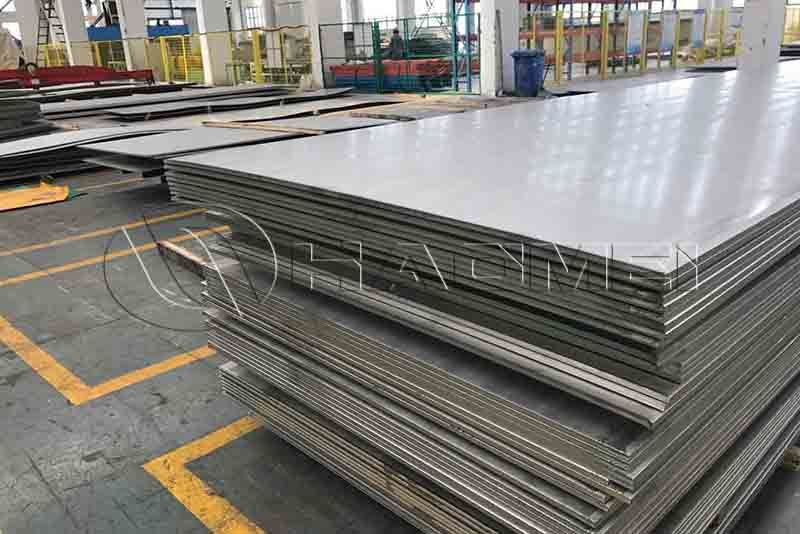Get in touch
-
Email:
sale@alumhm.com -
Tel/whatsapp:
+86-15978414719 -
Fax:
+86-0371-65621393 -
Address:
No.14 Waihuan Road, CBD, Zhengzhou, China -
Website:
https://www.aluminium-auto-sheet.com
What Are Properties of of Aluminum Alloy 6101 and 6111
In the wave of automotive industry transformation towards lightweighting and energy conservation, aluminum alloys, with their advantages of low density, high specific strength, and easy recyclability, have become a core material to replace traditional steel. Among them, the 6101 and 6111 aluminum alloy grades, although both belonging to the 6-series aluminum alloys (Al-Mg-Si series), occupy an irreplaceable position in automobile manufacturing due to their unique performance advantages.

6101 Aluminum Alloy
The core advantage of aluminum alloy 6101 lies in its excellent electrical conductivity, reaching over 50% IACS (International Annealed Copper Standard), far exceeding that of ordinary structural aluminum alloys. It also possesses good mechanical properties—after T6 heat treatment, its tensile strength can reach over 300 MPa, its yield strength is approximately 276 MPa, and its elongation remains at 8%-12%, achieving a balance between conductivity and strength.
Furthermore, it exhibits excellent corrosion resistance, effectively resisting the erosion of rainwater and oil stains in the complex operating environment of automobiles, reducing material loss. It's worth noting that its machinability is also excellent, enabling rapid machining into high-precision parts and reducing production time.
Process Maturity
As an aluminum alloy grade with a long history of application, 6101's production process is quite mature. From precise composition control in the smelting stage to plastic processing techniques such as rolling and extrusion, and heat treatment processes such as T6 (solution treatment + artificial aging), standardized production processes have been established.
Applications
Based on its dual advantages of conductivity and strength, 6101 aluminum alloy's applications in automobiles are highly focused on electrical systems and lightweight structural components. In new energy vehicles, it is an ideal material for battery pack connectors and high-voltage wiring harness conductors, efficiently transmitting large currents while reducing the weight of the electrical system. Traditional fuel vehicles also frequently use 6101 aluminum alloy for components such as generator brackets and cable connectors to balance conductivity and structural stability.
6111 Aluminum Alloy
The core competitiveness of 6111 aluminum alloy lies in its excellent formability, especially its deep-drawing performance and resistance to aging cracking. Its elongation can reach over 20%, effectively preventing cracking and wrinkling during the stamping process of complex curved surfaces, perfectly meeting the needs of complex curved body panels such as automotive hoods, doors, and fenders.
More importantly, it possesses significant bake-hardening characteristics. After stamping, during the baking process (170℃-180℃) in automotive painting, a strengthening phase will further precipitate within the material, increasing tensile strength by 30%-40%, ultimately reaching 280MPa-320MPa.
This satisfies both the requirement for "easy formability" during stamping and the achievement of "high strength" through baking after forming, achieving a perfect balance between "formability" and "final strength." Furthermore, its high surface finish results in excellent aesthetics after painting, meeting the visual requirements of automotive bodies.
Process Maturity
With the increasing demand for lightweight automotive body materials for body panels, the production process of 6111 aluminum alloy has been specifically optimized. Currently, the smelting process allows for precise control of the amount of copper added, balancing formability and strength; the rolling process enables uniform control of sheet thickness, ensuring consistency during stamping.
Applications
The application of 6111 aluminum alloy is highly concentrated in automotive body panels. Whether in traditional gasoline vehicles or new energy vehicles, components such as hoods, inner/outer door panels, fenders, and trunk lids widely utilize 6111 aluminum alloy sheets. Taking a mainstream new energy vehicle brand as an example, 6111 aluminum alloy accounts for over 30% of its body panels, reducing vehicle weight by 15%-20% and improving collision resistance and durability. Furthermore, some high-end models also use 6111 aluminum alloy for interior trim, leveraging its excellent surface properties to create a more refined interior environment. Welcome to inquire 6111 aluminum price from us directly.
